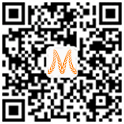
With the continuous development of optical communication industry, it involves more and more application scenarios. With the advent of the 5G era, smart home, VR/AR, smart grid, smart medical/Internet + hospital, smart agriculture, smart transportation, smart campus and other emerging optical communication application scenarios have sprung up and gradually integrated into our daily life. Among them, the smart home, which is closely related to our daily life, it is constantly promoting the development of optical communication with the intellectualization of family equipment.
The further popularization and penetration of smart home around the world has continuously increased the requirements of Internet coverage and bandwidth. The increasing variety of intelligent household appliances and the improvement of intellectualization, such as the introduction of gesture and voice control functions, make it put forward higher requirements for reliability, delay and so on. The gradual improvement of the penetration rate of FTTH (Fiber To The Home) and the landing of Wi-Fi 6 and other technologies better meet The requirements of smart home devices for network performance. The explosive growth of demand has driven the collaborative growth of optical communication industry and endowed the optical communication industry with new vitality.
Smart home uses the Internet to connect household appliances to achieve remote monitoring and management. As an important part of the Internet of Things (IoT), smart home can be divided into three stages: digital home, home connect and AI home with the increase of interconnection depth, which can bring owners a higher sense of security, comfort, convenience and energy saving. Smart home system is built around sensors, actuators and controllers that cover the whole family, two-way information exchange, communication transmit to the Internet and information Internet transmit back, as well as computing power in the cloud processing and analysis of data. Smart home devices need to realize networking control, they can connect with methods of Fiber to the Rooms (FTTR) or Smart Home Hubs to provide high speed and high stable optical network access, to realize intelligent interconnection of multiple devices and systems. Specific applications include intelligent equipment linkage, equipment maintenance and home safety protection.
Intelligent equipment linkage
Entertainment devices such as televisions, speakers, and game controllers can be connected to the connected grid for intelligent control and real-time power feedback to optimize their electricity use. Connected devices can also learn from historical data, optimize device power storage and improve the user experience.
Equipment maintenance
Water, electricity and coal constitute the core of smart home. The electricity consumption based on intelligent lighting and intelligent temperature controller will be detected, and automatically detect any power failure in the system, so as to self-regulate, avoid the fault in the circuit, and timely inform maintenance.
Home safety protection
Interconnect locks and security cameras grant or deny access to visitors, depending on the user's Settings. With the learning computing power of the system, monitor can tell the difference between visitors and intruders, thus notifying the host of any unusual activity.
EXSENSE Electronics Technology Co., Ltd. has been focusing on the research, development and production of optical communication NTC thermistor chip for more than 14 years. Our NTC thermistor chip has the characteristics of high precision, high sensitivity and great reliability, which can better play the role of temperature monitoring and temperature controlling in optical communication module.







